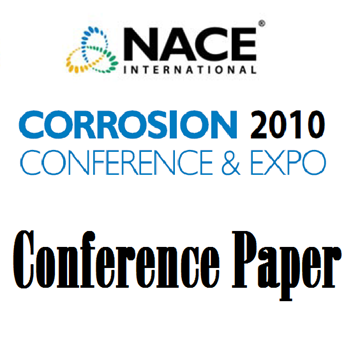In Corrosion/2021, the authors introduced a molecular mechanistic model that quantifies and predicts SNAPS corrosion rates. During Corrosion/2022, we presented the mechanistic corrosion prediction framework describing the molecular basis of the model’s reactions, kinetics, and mass transport of ROSC to vessel walls. In this molecular model, sulfidation corrosion is calculated for direct heterolytic reaction of ROSC with solid surfaces.
Product Number:
51323-19105-SG
Author:
Winston Robbins, Sridhar Srinivasan, Gerrit Buchheim
Publication Date:
2023
$0.00
$20.00
$20.00
Sulfur has long been recognized to contribute to many forms of corrosion in petroleum refining. One of the most common and least understood forms of corrosion is hot oil sulfidation, i.e., localized wall thinning by reactive organic sulfur compounds (ROSC) in CDU and VDU operations. In oil at 400-750F (204-400C), Simultaneous Naphthenic Acid alongside Sulfidation (SNAPS) reactions remove iron (Fe) from steel surfaces. Discrepancies in observed corrosion among refinery operators (through inspection) and laboratory testing are frequently due to differences in sulfur analyses of oils. In Corrosion/2021, the authors introduced a molecular mechanistic model that quantifies and predicts SNAPS corrosion rates. During Corrosion/2022, we presented a mechanistic corrosion prediction framework describing the molecular basis of the model’s reactions, kinetics, and mass transport of ROSC to vessel walls. The model uses liquid phase concentrations of sulfides and mercaptans rather than H2S as a proxy for predicting sulfidation. Recent work has confirmed that sulfides account for 1/3 of total % S. Thus, total %S and ppm mercaptan S are used as inputs for ROSC in the model.
Historically, ROSC were considered to react with steel after thermally decomposing to hydrogen sulfide (H2S). Although thermal H2S evolution was considered a better indicator of corrosion potential than total wt% of S (%S), empirical industry-wide surveys use %S and temperature for alloy selection. Published API and NACE guidelines use %S and temperature in “thinning tables” for sulfidation with and without naphthenic acids (NAP). However, model S compounds have been shown to react more rapidly than H2S with steel in the vapor phase at hot oil temperatures. Direct reaction of model ROSC in oils has likewise been demonstrated in the liquid phase with short residence time flow-through autoclaves. Nevertheless, some industry JIP models still use “H2S partial pressure” as a proxy for reactive S for inputs into prediction models, even though it is now well understood that H2S is a secondary byproduct stemming from decomposition of unreacted ROSC. Model ROSC used in laboratory studies differ substantially from those identified in refinery streams by advanced characterization of refinery oils. Evaluation of the sulfur functional group concentrations found in typical crude oils reveals that with the 1/3rd rule in place of quantitative measurement of total % S and ppm mercaptan S in petroleum stream is necessary and sufficient for sulfidation prediction.
Key Takeaways: Sulfidation corrosion occurs by direct heterolytic reaction of ROSC with metal surface.ROSC can be estimated as the sum of sulfides (= 1/3 of total %S) and ppm mercaptan S.Quantitative ROSC is a more reliable corrosion predictor than H2S partial pressure.




